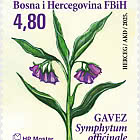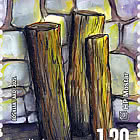SREBRENICA, a town in eastern Bosnia, has become a world symbol for suffering and martyrdom in the Serbian aggression against Bosnia and Herzegovina, from 1992 to 1995.
It was the Romans who first showed an interest in the Srebrenica region, where lead and silver were mined. In the Antiquity DOMAVIA was the center of mining and metal processing. The municipium was raised to the status of a colony. Roman writers mention “argentariae Delmaticae” – The Dalmatian silver mines. After that the road station of ARGENTARIA near the present-day Srebrenica was included in ancient maps. The archaeological site of Grad contains the remains of a Roman municipal building, court and public baths. Srebrenica was first mentioned as the suburbs of the fortress of Srebrenik in the written records of Dubrovnik from 1352. Dubrovnik had a colony and a consul in Srebrenica. Soon after that the first Franciscan friars arrived to the town. In 1375 the historian Bartol of Pisa wrote about the Franciscan monastery in Srebrenica as being one of the oldest in Bosnia.
Medieval sources mention St Mary and St Nicholas’ churches. Some historians suppose that the White Mosque at Srebrenica covers the remains of St Nicholas’ church, as we can trace the Gothic vault and arches, a sanctuary and an altered façade. The monastery gave its name to the whole Franciscan province of Bosna Srebrena in 1517 (Provincia Bosnae Argentinae). In the second half of the 15th c. this region fell to the Turks. However, the Bosnian bishop Franjo Baličević wrote in 1600 that the villages around Srebrenica and the town itself contained over 200 catholic households. A memorial church designed by Alma Simić, an architect from Sarajevo, was built in 1991, on the foundations of the destroyed St Mary’s church.
Although Srebrenica was a safe haven, the Serbian soldiery took the town on July 11th 1995, burned and pillaged the place after killing thousands of Bosnian Muslims, committing genocide. Srebrenica, a town of glorious past and name, has been blurred by the world’s shame and impotence.

































